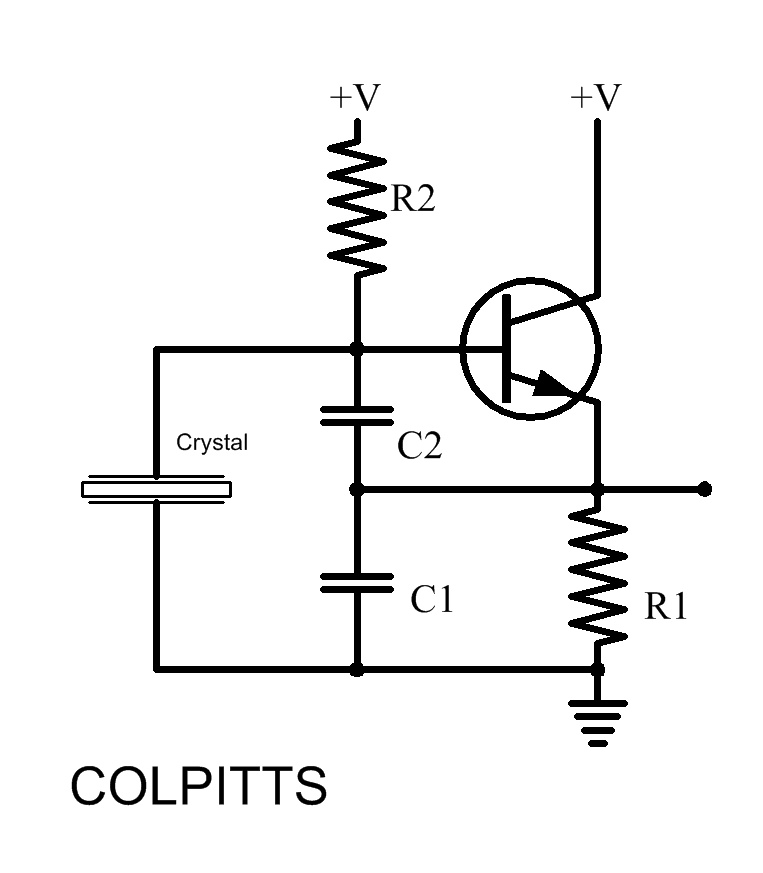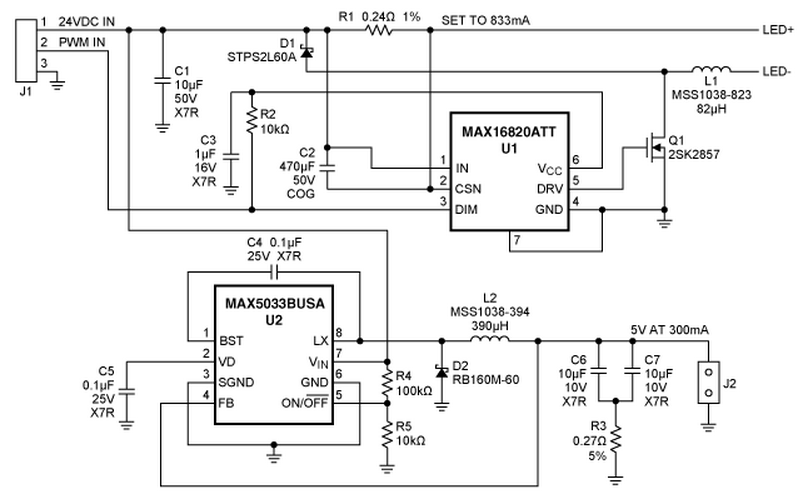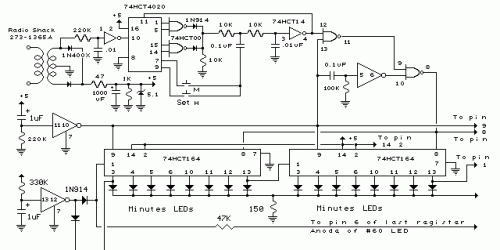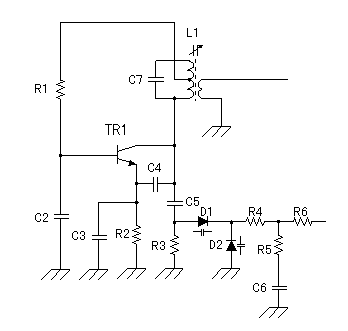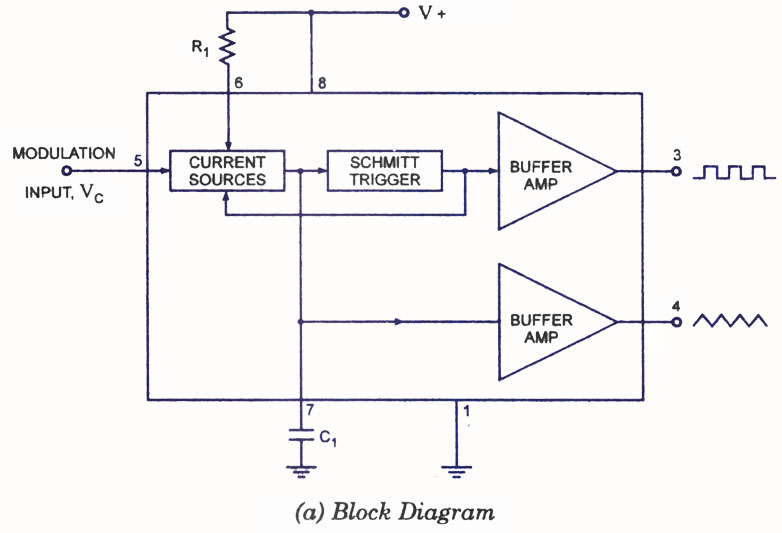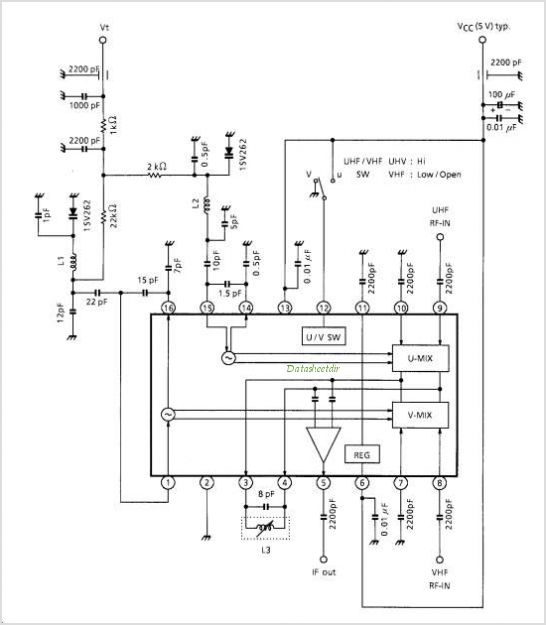
Replacement For The LM3909 LED Flasher / Oscillator
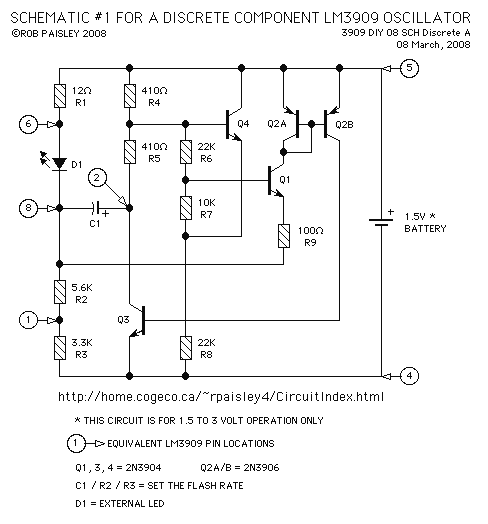
This page features a replacement circuit for the LM3909 LED Flasher / Oscillator using discrete components. The circuit is functionally the same as the integrated LM3909 but has a minor variation of the components used. Naturally the circuit will not be as physically as compact as the integrated circuit but it does offer the ability to adjust individual component values and may actually be less expensive than the integrated circuit.
The replacement circuit for the LM3909 LED Flasher/Oscillator utilizes discrete components to achieve similar functionality to the original integrated circuit. The design typically incorporates a transistor, resistors, capacitors, and diodes arranged to create an astable multivibrator configuration. This setup allows for the generation of a square wave output that drives an LED or a series of LEDs to flash in a controlled manner.
Key components of the circuit may include a general-purpose NPN transistor, such as the 2N3904, which acts as the switching element. The resistors are selected to set the timing intervals for the flashing LEDs, while the capacitors determine the charge and discharge cycles, ultimately controlling the frequency of the flashing. A diode may be included to protect the circuit from reverse voltage spikes, enhancing reliability.
The flexibility of using discrete components allows for adjustments to be made to the values of resistors and capacitors, enabling fine-tuning of the flashing rate and duty cycle. This adaptability can be beneficial in applications where specific timing characteristics are required.
While the physical size of the circuit is larger compared to the compact nature of the LM3909 integrated circuit, the cost-effectiveness and customization options provided by discrete components may outweigh the disadvantages for certain projects. Overall, this circuit serves as a practical alternative for those looking to replicate the functionality of the LM3909 with the added benefit of component-level adjustments.This page features a replacement circuit for the LM3909 LED Flasher / Oscillator using discrete components. The circuit is functionally the same as the integrated LM3909 but has a minor variation of the components used.
Naturally the circuit will not be as physically as compact as the integrated circuit but it does offer the ability to adjust individual component values and may actually be less expensive that the integrated circuit. 🔗 External reference
The replacement circuit for the LM3909 LED Flasher/Oscillator utilizes discrete components to achieve similar functionality to the original integrated circuit. The design typically incorporates a transistor, resistors, capacitors, and diodes arranged to create an astable multivibrator configuration. This setup allows for the generation of a square wave output that drives an LED or a series of LEDs to flash in a controlled manner.
Key components of the circuit may include a general-purpose NPN transistor, such as the 2N3904, which acts as the switching element. The resistors are selected to set the timing intervals for the flashing LEDs, while the capacitors determine the charge and discharge cycles, ultimately controlling the frequency of the flashing. A diode may be included to protect the circuit from reverse voltage spikes, enhancing reliability.
The flexibility of using discrete components allows for adjustments to be made to the values of resistors and capacitors, enabling fine-tuning of the flashing rate and duty cycle. This adaptability can be beneficial in applications where specific timing characteristics are required.
While the physical size of the circuit is larger compared to the compact nature of the LM3909 integrated circuit, the cost-effectiveness and customization options provided by discrete components may outweigh the disadvantages for certain projects. Overall, this circuit serves as a practical alternative for those looking to replicate the functionality of the LM3909 with the added benefit of component-level adjustments.This page features a replacement circuit for the LM3909 LED Flasher / Oscillator using discrete components. The circuit is functionally the same as the integrated LM3909 but has a minor variation of the components used.
Naturally the circuit will not be as physically as compact as the integrated circuit but it does offer the ability to adjust individual component values and may actually be less expensive that the integrated circuit. 🔗 External reference
